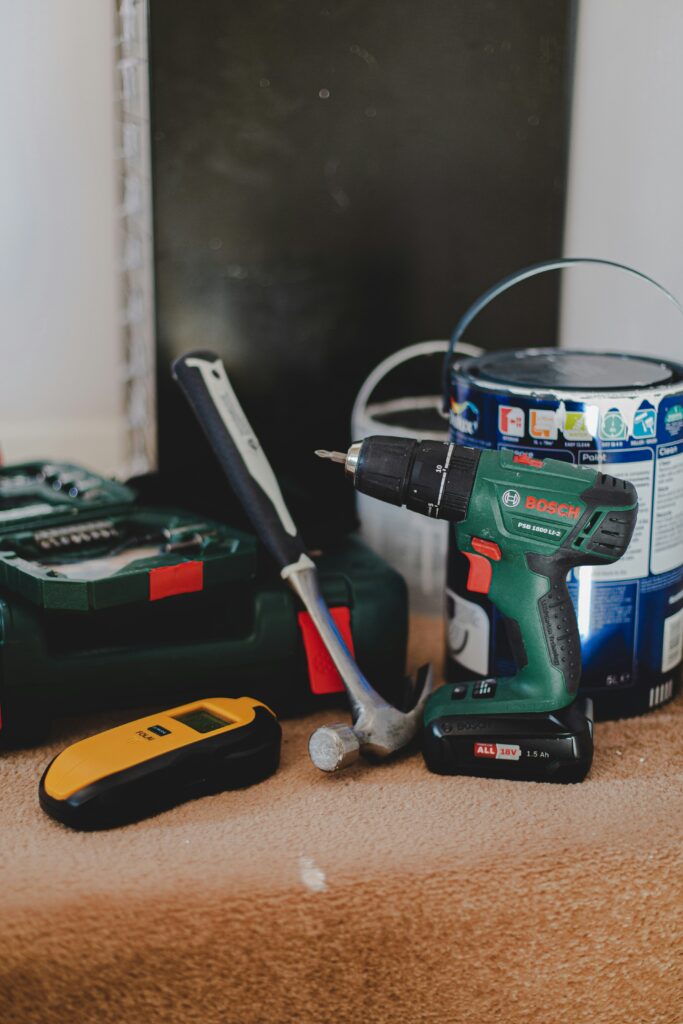Are you a steak enthusiast looking to up your grilling game? Well, look no further! This article is your ultimate guide to the essential tools you need for grilling steaks to perfection. From the grilling tongs that ensure a flawless flip to the trusty meat thermometer that guarantees the ideal level of doneness, we’ve got you covered. So, grab your apron and get ready to learn about the must-have tools that will elevate your steak grilling experience to the next level! Grilling steaks is a beloved pastime for many, and having the right tools can make all the difference in achieving the perfect sear and flavor. From the type of grill you choose to the accessories you use, each element plays a role in the grilling process. In this comprehensive guide, we will discuss the essential tools you need to grill steaks to perfection.
Grill: The type of grill matters – charcoal vs. gas
When it comes to grilling steaks, the type of grill you use can greatly impact the flavor and cooking experience. The two most common options are charcoal and gas grills, each with its own advantages.
Charcoal grills provide that classic smoky flavor that many steak enthusiasts prefer. The process of lighting charcoal and waiting for it to heat up might take longer compared to gas grills, but the flavor it imparts on the steak is unparalleled. Additionally, charcoal grills can reach higher temperatures, allowing for a more intense sear on your steaks.
On the other hand, gas grills offer convenience and ease of use. With just the flip of a switch, you can start grilling immediately, without the need to worry about lighting and maintaining charcoal. Gas grills also offer better temperature control, making it easier to achieve the desired level of doneness for your steaks.
Ultimately, the choice between charcoal and gas boils down to personal preference. Consider factors such as flavor, convenience, and control when selecting the grill that suits your grilling style.
Grill Grates: Understand grill grates – cast iron, stainless steel, coated steel
The grill grates you use can significantly impact the cooking process and the final texture of your steaks. There are several types of grill grates available, including cast iron, stainless steel, and coated steel grates.
Cast iron grates are popular among serious steak enthusiasts due to their ability to retain and distribute heat evenly. They create beautiful sear marks and are excellent at retaining heat even as you place the steaks on them. However, cast iron grates require proper care and maintenance to prevent rusting.
Stainless steel grates are durable and easy to clean. They heat up quickly and evenly, making them ideal for searing steaks. One downside is that they may not retain heat as well as cast iron, resulting in slightly less intense sear marks.
Coated steel grates are often found in lower-cost grills. While they may not provide the same heat retention or even heat distribution as cast iron or stainless steel grates, they still serve their purpose for grilling steaks. However, the coating may wear off over time, so it’s important to handle them with care to prevent peeling.
When choosing grill grates, consider factors such as heat retention, durability, and ease of maintenance. Ultimately, the type of grate you choose will depend on your personal preferences and budget.
Meat Thermometer: Types of thermometers – analog, digital
Achieving the perfect level of doneness for your steaks requires precise temperature monitoring. A meat thermometer is an essential tool for ensuring your steaks are cooked to perfection. There are two common types of meat thermometers: analog and digital.
Analog thermometers have been around for a long time and are often seen as a reliable and cost-effective option. They consist of a metal probe with a dial at the top, indicating the temperature. While analog thermometers can provide accurate readings, they may be slightly less precise compared to their digital counterparts.
Digital thermometers offer more advanced features and precise temperature readings. They typically have a digital display that shows the temperature. Many digital thermometers also come with additional features such as preset temperature options and alarms.
When selecting a meat thermometer, consider your preferences and the level of accuracy you require. Both analog and digital thermometers can effectively monitor cooking temperature, so choose the one that suits your grilling style.

How to monitor cooking temperature effectively
Regardless of the type of thermometer you choose, it’s important to know how to monitor the cooking temperature effectively. Here are some tips to ensure you get accurate readings:
Insert the thermometer into the thickest part of the steak, avoiding contact with bones or fat.
Wait for a few seconds to allow the thermometer to stabilize and provide an accurate reading.
For thicker steaks, such as ribeyes or T-bones, consider taking multiple readings at different spots to ensure consistent doneness.
Clean and sanitize your thermometer after each use to prevent cross-contamination.
By following these simple guidelines, you can confidently monitor the internal temperature of your steaks and achieve the desired level of doneness.
Grill Tongs: Choosing the right length
When it comes to grilling steaks, having the right pair of tongs is crucial for handling and flipping the meat safely. One of the key considerations when choosing grill tongs is the length.
Long tongs, typically around 16 to 18 inches, provide a safe distance between your hands and the hot grill grates. They allow you to flip steaks and move them around without getting too close to the heat source. Long tongs are especially important when dealing with larger cuts of meat or when grilling over high heat.
Shorter tongs, around 12 inches, offer more control and precision. They are ideal for delicate tasks such as arranging charcoal or adjusting grill grates. Short tongs also come in handy when grilling smaller cuts of steak or when working with limited space.
Ultimately, the length of grill tongs you choose will depend on your personal preference and the type of grilling you do. Consider factors such as the size of your grill, the cuts of steak you typically grill, and your comfort level when handling hot surfaces.
Ensuring it is heat resistant and rust-resistant
Aside from length, it’s essential to choose grill tongs that are heat resistant and rust-resistant. Invest in tongs made from high-quality materials such as stainless steel or heat-resistant silicone. These materials can withstand high temperatures without compromising their integrity or melting.
Additionally, look for tongs with a locking mechanism to keep them closed when not in use. This feature not only makes storage more convenient but also prevents accidents and ensures your tongs last longer.
To prevent rust, it’s crucial to clean and dry your tongs after each use. Avoid leaving them exposed to moisture for an extended period, as this can lead to rust formation. Proper maintenance and care will prolong the lifespan of your grill tongs and keep them in excellent working condition.

Grill Brushes: Brush types – wire, nylon, bristle-free
Cleaning your grill grates is an essential part of maintaining their performance and prolonging their lifespan. Grill brushes are designed specifically for this purpose, but it’s important to choose the right brush for your needs. There are several brush types available, including wire brushes, nylon brushes, and bristle-free brushes.
Wire brushes are commonly used for removing stuck-on food and grease from grill grates. They have sturdy bristles that effectively scrape away residue. However, it’s important to choose high-quality wire brushes that won’t shed bristles, as these can pose a safety hazard if ingested.
Nylon brushes are a safer alternative to wire brushes, as they don’t shed bristles. They are excellent for regular maintenance and light cleaning. Nylon brushes are less abrasive than wire brushes, making them suitable for delicate grill grates.
Bristle-free brushes are becoming increasingly popular due to safety concerns associated with wire brushes. These brushes utilize materials such as silicone or stainless steel coils to scrape away debris from grill grates. Bristle-free brushes provide peace of mind and eliminate the risk of bristles getting stuck in your food.
To effectively clean your grill grates, ensure that the brush you choose has stiff bristles or coils that can remove stubborn residue. Regularly clean and replace your grill brush to maintain its effectiveness and prevent any potential food safety risks.
Proper cleaning method and maintenance
To ensure the longevity of your grill brush, proper cleaning and maintenance are crucial. Here are some tips:
After each use, clean the brush thoroughly with hot soapy water to remove grease and residue. Pay attention to the bristles or coils, ensuring they are free of any debris.
Rinse the brush with clean water to remove any soap residue.
Sanitize the brush by soaking it in a solution of water and vinegar or a mild bleach solution. This step will help eliminate any bacteria or pathogens that might have accumulated on the brush.
Allow the brush to air dry completely before storing it in a clean and dry place.
Additionally, regularly inspect your grill brush for any signs of wear and tear. Replace the brush if you notice damaged bristles, loose handles, or any other signs of deterioration. By following these cleaning and maintenance practices, you can keep your grill brush in excellent condition for years to come.
Grill Gloves: Fabric vs. Leather material
Grill gloves are an essential tool for protecting your hands from heat and flames while grilling steaks. When choosing grill gloves, one of the key considerations is the choice of material: fabric or leather.
Fabric grill gloves are typically made from materials such as heat-resistant synthetics or aramid fibers. These gloves offer excellent heat resistance, giving you the confidence to handle hot grill grates, utensils, and even charcoal. They are lightweight, flexible, and provide a snug fit, allowing for dexterity and ease of movement.
Leather grill gloves, on the other hand, offer superior durability and protection. They are often made from high-quality leather, such as cowhide or goatskin, which can withstand high temperatures and provide insulation against heat. Leather gloves are thicker and more durable than fabric gloves, making them suitable for heavy-duty grilling.
When selecting grill gloves, consider factors such as comfort, heat resistance, and durability. Both fabric and leather gloves can effectively protect your hands, so choose the type that best suits your needs and preferences.

How to ensure proper fit and maximum protection
To ensure proper fit and maximum protection, it’s important to choose grill gloves that are the right size and provide adequate coverage. Here are some tips:
Measure your hand size accurately to determine the appropriate glove size. Most manufacturers provide size charts to help you make the right choice.
Ensure the gloves cover your hands, wrists, and lower forearms to protect against heat and potential burns. Look for gloves with extended cuffs for added protection.
Check for a snug fit without restricting movement. The gloves should allow for easy gripping of grill tools and utensils.
Consider gloves with additional features such as non-slip grip or extra padding for enhanced safety and comfort.
By following these guidelines, you can select grill gloves that fit well and provide maximum protection while grilling steaks.
Marinade Tools: Essence of a meat injector
Marinating steaks is a fantastic way to infuse them with flavor and tenderness. Marinade tools, such as meat injectors and marinade brushes, are essential for effectively marinating your steaks.
A meat injector, also known as a marinade injector or flavor injector, allows you to inject marinade or seasoning directly into the meat. This tool is particularly useful for larger cuts of steak, as it helps distribute the flavors evenly throughout the meat. A meat injector typically consists of a syringe-like device with a needle attachment for easy injection.
To use a meat injector, prepare your marinade or seasoning and draw it into the syringe. Insert the needle into the steak and slowly depress the plunger, injecting the marinade evenly. Be sure to inject the marinade at different depths and angles to ensure even distribution.
Using a meat injector can significantly enhance the flavor and tenderness of your steaks, giving them an extra depth of taste.
Advantages of a marinade brush
While a meat injector is excellent for distributing marinade from the inside, a marinade brush is equally important for applying marinade to the surface of your steaks. A marinade brush allows you to baste your steaks during the grilling process, enhancing the flavor and moisture retention.
Marinade brushes typically come in two varieties: silicone brushes and natural bristle brushes. Silicone brushes are heat resistant, easy to clean, and do not retain odors. They are ideal for all types of marinades, including those containing acidic ingredients. Natural bristle brushes, on the other hand, are typically made from boar bristles and have good liquid retention. They are perfect for oil-based marinades.
To use a marinade brush, generously coat your steaks with your desired marinade or sauce, ensuring even coverage. Brush on more marinade as needed throughout the grilling process.
Using a combination of a meat injector and a marinade brush will give your steaks an explosion of flavor, making them even more enjoyable to eat.
Steak Knives & Cutting Board: Picking a quality steak knife
Once your delicious steaks are perfectly grilled, it’s essential to have the right tools for serving and enjoying them. Steak knives and a cutting board are crucial for a seamless steak dining experience.
When it comes to picking quality steak knives, consider the following factors:
Blade quality: Look for knives with high-quality stainless steel blades. These blades are durable, sharp, and resistant to rust and staining.
Comfortable handles: Opt for knives with ergonomic handles that provide a comfortable grip. Steak knives with full tang construction, where the blade extends into the handle, offer superior balance and durability.
Serrated or straight edge: Decide whether you prefer serrated or straight-edge steak knives. Serrated knives are excellent for cutting through thick steaks with ease, while straight-edge knives provide precise slicing.
Quantity and storage: Determine the number of steak knives you need based on the size of your household or the number of guests you typically entertain. Look for sets that come with a storage block or sheaths to protect the blades and ensure easy access.
By selecting quality steak knives, you can effortlessly slice through your perfectly cooked steaks and enjoy each bite.
Choosing a safe and functional cutting board
A safe and functional cutting board is essential for preparing and serving steaks. When choosing a cutting board, keep the following aspects in mind:
Material: Opt for cutting boards made from materials such as hardwood (e.g., maple or teak) or bamboo. These materials are durable, resistant to knife marks, and naturally antimicrobial.
Size and thickness: Consider the size of your steaks and the available counter space. Ensure the cutting board is large enough to comfortably accommodate your steaks while providing ample space for slicing and carving.
Juice groove: Look for cutting boards with a built-in juice groove around the edges. This feature helps contain the juices released from the steak, preventing mess and preserving the flavor.
Maintenance: Choose a cutting board that is easy to clean and maintain. Avoid cutting boards with deep grooves or hard-to-reach crevices that can harbor bacteria.
Proper care and maintenance of your cutting board, such as regular cleaning and oiling, will ensure its longevity and keep it in pristine condition.
Grill Light: Why grill light is needed
Grilling steaks doesn’t have to be restricted to daylight hours. A grill light is a valuable tool that allows you to enjoy the grilling experience any time, day or night. Here’s why a grill light is essential:
Visibility: A grill light illuminates your grilling area, providing visibility even in low-light conditions. This allows you to keep a close eye on your steaks and make precise adjustments without relying solely on external light sources.
Safety: With a grill light, you can easily see the controls, knobs, and dials on your grill, ensuring safe operation. It also allows you to monitor the cooking progress without lifting the grill lid, reducing the risk of flare-ups or accidents.
Convenience: Whether you’re grilling in the early morning or late evening, a grill light eliminates the need for additional lighting setups or flashlights. It provides a targeted and focused light source, allowing you to concentrate on the grilling process.
Most reliable grill light features
When choosing a grill light, consider the following features to ensure reliability and functionality:
Adjustable mounting options: Look for a grill light that offers versatile mounting options, such as clamp, magnet, or handlebar mounts. This allows you to attach the light securely to different grill models and positions.
Brightness and beam angle: Check the brightness rating and beam angle of the grill light. Aim for a high lumen output and a wide beam angle to ensure optimal visibility across your grilling surface.
Battery life: Consider the battery life of the grill light, especially if you plan on grilling for extended periods. Opt for lights with long battery life or those that are rechargeable for added convenience.
Durability: Choose a grill light that is built to withstand the outdoor grilling environment. Look for lights with sturdy construction, weather-resistant materials, and reliable seals to protect against moisture and grease.
By investing in a reliable grill light, you can enjoy the flexibility of grilling steaks at any time of the day or night, ensuring perfect results each time.
Chimney Starter: The convenience of a chimney starter
Getting your charcoal grill up and running quickly and efficiently is crucial for grilling steaks. A chimney starter is a must-have tool for achieving consistent and reliable ignition.
A chimney starter is a cylindrical metal container with a handle and vents. It allows you to light charcoal without the need for lighter fluid, which can impart unwanted flavors onto your steaks. The chimney starter works by creating a chimney effect, where the lit coals at the bottom heat up the unlit coals on top.
To use a chimney starter, simply fill it with the desired amount of charcoal, place crumpled newspaper or fire starters at the bottom, and ignite them. The heat generated by the burning newspaper or fire starters will rise and ignite the charcoal, ensuring even and consistent heat throughout.
The convenience of a chimney starter cannot be overstated. It eliminates the need for lighter fluid, reduces the risk of flare-ups, and allows for faster and more efficient ignition of charcoal, making it an indispensable tool for grilling steaks.
How to use chimney starter properly
Using a chimney starter properly is key to achieving optimal results. Follow these steps for safe and efficient charcoal ignition:
Measure the amount of charcoal you need based on the size of your grill and the amount of food you’re grilling. Fill the chimney starter with the appropriate amount of charcoal, leaving some space at the top for airflow.
Place crumpled newspaper or fire starters at the bottom of the chimney starter. Avoid using excessive amounts of newspaper, as this can create excessive smoke and affect the flavor of your steaks.
Set the chimney starter on the charcoal grate or another heat-resistant surface. Ensure the vents at the bottom of the chimney are unobstructed for proper airflow.
Ignite the newspaper or fire starters through the vents at the bottom. Allow the charcoal to ignite for approximately 15-20 minutes, or until the coals are covered with a layer of gray ash.
Wearing heat-resistant gloves, carefully pour the hot coals onto the charcoal grate of your grill. Spread them out evenly to create a uniform layer of heat.
By following these steps, you can effectively and safely ignite charcoal using a chimney starter, ensuring a hassle-free grilling experience.
Smoke Box: Understanding the benefits of smoky flavor
Adding a smoky flavor to your grilled steaks can take them to a whole new level of deliciousness. A smoke box is a valuable tool that allows you to infuse your steaks with smoky goodness.
A smoke box, also known as a smoking box or smoker box, is a small metal container that holds wood chips or chunks. It is placed directly on the grill grates, allowing the wood to smolder and produce smoke. The smoke then envelops the steaks, infusing them with a rich and distinct smoky flavor.
The benefits of a smoky flavor are multifaceted. The smoke not only adds depth and complexity to the taste of the steaks but also enhances the overall grilling experience. The aroma of smoldering wood chips creates an enticing environment, heightening the anticipation and enjoyment of the meal.
How to utilize a smoke box in grilling steaks
To effectively utilize a smoke box in grilling steaks, follow these steps:
Soak the wood chips or chunks in water for approximately 30 minutes. This helps prolong the smoking process and prevents the wood from burning too quickly.
Drain the soaked wood chips and place them inside the smoke box. Fill the box to approximately three-quarters full, allowing for proper airflow.
Preheat your grill to the desired temperature and set it up for indirect grilling. Place the smoke box directly on the grill grates, preferably over a lit burner or a hot spot.
Once the smoke box starts producing smoke, carefully place your steaks on the grill grates, away from direct heat. Close the grill lid to retain the smoke and flavor.
Monitor the smoke level and adjust the heat as needed to maintain a steady flow of smoke. The smoking process can take anywhere from 30 minutes to a few hours, depending on the desired intensity of the smoky flavor.
Properly utilizing a smoke box allows you to experiment with different types of wood chips or chunks, such as hickory, mesquite, or applewood, to achieve different flavors and intensities. The versatility of a smoke box enhances your grilling repertoire and allows you to create mouthwatering, smoky steaks.
In conclusion, grilling steaks is an enjoyable and rewarding experience, especially when armed with the right tools. From choosing the right type of grill and grill grates to utilizing accessories such as meat thermometers, grill tongs, grill brushes, grill gloves, marinade tools, steak knives, cutting boards, grill lights, chimney starters, and smoke boxes, each tool plays a crucial role in achieving the perfect steak.
By understanding the benefits and functionality of each tool, you can elevate your grilling game and consistently produce mouthwatering steaks that are seared to perfection, bursting with flavor, and melt-in-your-mouth tender. So, gather your tools, fire up the grill, and get ready to enjoy the wonderful world of steak grilling!

